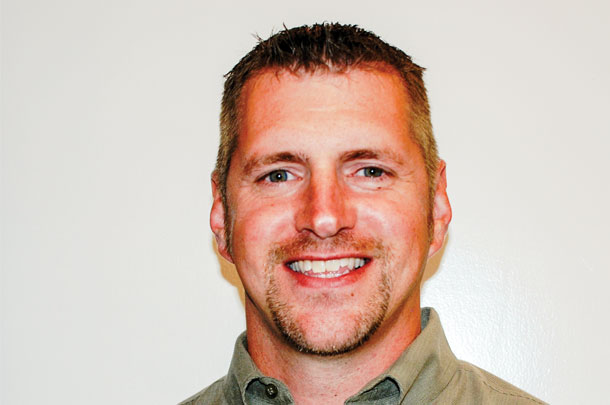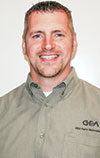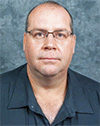-
Labor: Quality labor to milk and manage cows is becoming more difficult to find and is more expensive than ever. Automation technology reduces labor inputs and provides a more consistent way to achieve quality milk.
- Consistency: Even the best herd managers can’t be completely focused on managing all aspects of the herd at a top level all of the time. Automation technology helps control the cow environment for consistency.
Incorporating automation technology to manage your herd involves thoughtful planning. It changes how you manage and complete daily tasks. Keep the following considerations in mind as you look to the future.
What’s one thing I need to know about automation?
Moscho: A single solution does not fit all farms. Bring it back to the basics when planning to evaluate your design options. Review the pros and cons of each option to determine what makes financial sense for you and how you plan to manage the facility.
Roberts: Be prepared for change. You will need to adjust the way you manage to maximize your performance potential and investment. For example, consider how you’ll keep the cows clean and comfortable when they’re always in the barn. How will you handle manure? Move cows? Ventilate the barn?
Sanford: It is not a cure-all; it helps reduce the number of variables. When problems arise, don’t jump to the conclusion that automation is the problem. Take a look at the full picture to assess the situation – consider cows, housing and management activities.
What are the biggest challenges with today’s automated barns?
Moscho: Always consider how you’ll complete your regular management activities in the new facility, such as feeding, breeding and vet checks. You want to design it to minimize the number of employees needed to manage the herd to maximize your investment in automation. For example, can one person rather than two easily move a cow from a special-needs pen to the milking center with minimal stress? Make sure you don’t limit your labor too much – you still need someone to monitor the housing environment.
Roberts: Herd management needs to be a continuous focus. Robotics can completely change the way a herd is managed in comparison to a conventional dairy. And it can take months to adjust to the new style of management. If you prepare for these changes in advance, it can make the transition go much smoother.
Sanford: Robotics are still new enough that when a problem arises, it’s easy for all eyes to go to the automation product. Problem-solving without jumping to conclusions is crucial to success. Take time to complete a full assessment and consider all possible contributing factors.
How do I prepare for a future with automation?
Moscho: Consider technology you can test drive in your existing facility, like activity monitoring for heat detection or milk meters. These test drives will help you get used to technology, managing data and using data to make management decisions. Having some experience with technology will make for a smoother transition to more extensive automation technology in the future.
Roberts: If you’re thinking about transitioning to milking automation, consider breeding your cows to be robot-ready – paying specific attention to udder conformation characteristics and teat placement. It can take two or three generations to move the needle on these traits for ideal robot attachment.
Sanford: Management style needs to adapt over time. Find an industry partner who is willing to assess data, provide feedback and adapt to your needs. Create a road map with various possible destinations and build your business model with flexibility.
How will automation technology need to adapt?
Moscho: Automation will need to have more intuitive and user-friendly controls. Just like with your iPhone, you want the technology, and you want it to be easy to use. The interface for the dairy producer needs to be simplistic and effective.
Roberts: There is an ongoing demand for improved milk sensor technology and meters to analyze milk quality and components. Technology will likely need to adapt to include other milk quality measures as processor demands evolve. The analysis will need to happen cowside and be user-friendly so you can view the information on your phone.
Sanford: Everyone seems to be on data overload – trying to understand the algorithms, collecting data, reading reports and sorting through it for usefulness. We need to get to a point where data reports provide useful, actionable plans.
What does success look like?
Moscho: Labor efficiency – labor hours per cow or milk hundredweight – is a top success measure. So is employee retainment. Can you create the type of work and an environment that attracts the future generation of employees? Cow performance is another success measurement – high milk quality, high production and low health challenges.
Roberts: Every farm is unique and measures success differently. Key performance indicators (KPIs) used for measuring success with conventional herd management can be applied to managing with automation using different parameters and tools. Producing the highest-quality milk as profitably as possible, regardless of barn or milking facility type, will measure our success.
Sanford: Automation can help create more efficient, profitable farms. Measuring success should be based on new farm establishment, growth of multigenerational farms and celebration of long-standing success. Success will be defined by our growth as an industry.
Automation products will be integral to how you manage your herd in the future. Consider a variety of automation technologies as you determine how you’ll complete regular management tasks. Work with your equipment dealer to plan and design your next facility so you can make the most of your buying decisions. ![]()
PHOTO: Incorporating automation technology to manage your herd involves thoughtful planning. Consider how you’ll manage and complete daily tasks to maximize your performance potential and investment. Courtesy photo.
AUTHORS
 Eric Moscho is a director of sales for milking and barn equipment with GEA. Email Eric Moscho.
Eric Moscho is a director of sales for milking and barn equipment with GEA. Email Eric Moscho.
 Mark Roberts is an automated milking sales specialist with GEA. Email Mark Roberts.
Mark Roberts is an automated milking sales specialist with GEA. Email Mark Roberts.
 Jeramy Sanford is a manure equipment product manager with GEA. Email Jeramy Sanford.
Jeramy Sanford is a manure equipment product manager with GEA. Email Jeramy Sanford.





